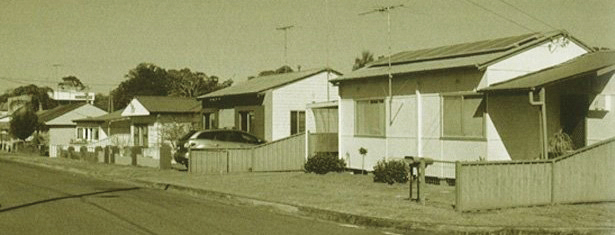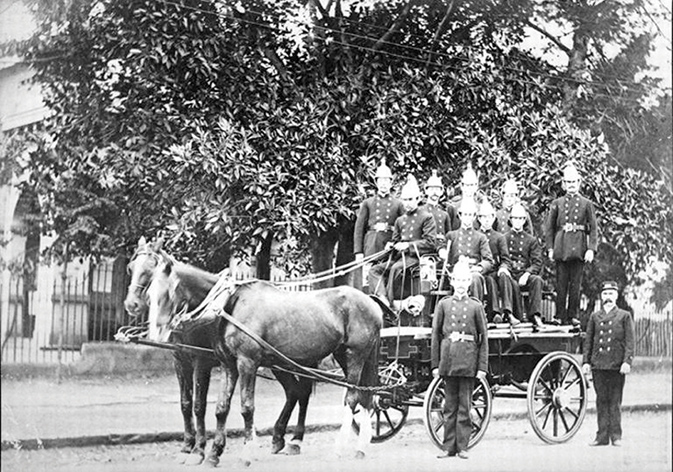Photo of the St Marys Duration Cottages on Kalang Avenue courtesy of Penrith City Library.
By Lyn Forde – President/Research Officer of St Marys & District Historical Society Inc.
IN August 1945 an opportunity for servicemen presented itself when the Federal Government’s decision to speed-up demobilisation and increase the home building rate that made the expansion of training facilities for ex-servicemen a matter of urgency. The President of the Master Builders’ Association and also a member of the NSW Regional Reconstruction Training Committee said they required at least 15,000 building tradesmen to be trained in the first three post-war years if the projected building targets were to be met. He said that about 4,200 ex-servicemen had begun professional or technical training and lately there had been a record number of 800 applicants. An expanded training programme for men in the building and associated industries was becoming a pressing need due to the building industry losing about 15,000 men during the war through enlistments and wastage because of their increasing age. Many men who had gone into other priority work had said that they would not return to building because they were getting on in years and preferred easier indoor jobs. With the labour outlook of grave concern to the industry it was suggested that the authorities should make a bold and imaginative approach to returned soldier rehabilitation by taking over the munitions factory at St Marys, one of Australia’s biggest munition establishments as a training centre as there were modern kitchens, mess rooms, refrigeration, change rooms and bathrooms with the big service hostel adjoining that could be taken over and there were 350 “duration cottages” nearby. Transport for those who did not want to “live-in” would not be difficult to arrange. Five thousand men had been transported to the centre daily during the factory’s construction. The trainees would need to study for about six months to reach 40% efficiency and after that they could be released to their chosen callings and their employers receiving a subsidy until they became fully efficient. This proper training scheme for the various types of skilled tradesmen who will be needed went right to the heart of the home building problem, with the supply of tools and instruments for rehabilitation training and for equipping the trained workers that improved with the local production of steel carpenters’ planes stepped-up to 1,000 a week and chisels and files made in fair quantity and braces from local makers. A century or so ago Australian’s were waiting for the preparations for the permanent survey of the Federal Capital site at Yass near Canberra that didn’t eventuate. If you fancied a home at Coffs Harbour you could have bought land for around £450. In Sydney, Farmer & Company’s Mail Order Department gave you the privilege to “stay at home and shop with ease”. You could suck on Hudson’s Eumenthol Jujubes for a sore throat and give Alderbury’s milk food to your baby that was affordable then, and for the discerning Australian male there was always a tipple of Robert’s Famous “The People’s Whisky” and Anthony Hordon sold Briar Pipes with “Tip Top Tobacco”. P&O Royal Mail Steamers and the White Star Line boasted a London return ticket at around £123. The Aberdeen Line did one better by offering a “round the world trip” for around £126. We have come a long way but sometimes it feels like we are back again after the war years with some of us having the hardship of watching the budget and to be able to feed the family and have a home to return to from a job if you are lucky to have one. But like those early days we all hope things will improve for all of us in the near future, so hang in there.
Source: Sydney Morning Herald, Nepean Times online and online research.






